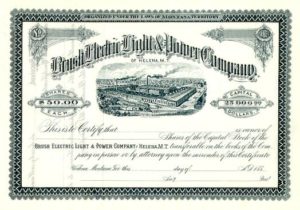The story sounds familiar. A young, technology-savvy entrepreneur builds an industry-leading company with the support of wealthy investors. His initial product rapidly commands 80% market share across the United States. The company recruits talented inventors and, while serving as managers and engineers, some develop technologies for new applications and launch ventures of their own. Within just a few years, the industrialist helps incubate half a dozen successful startups in energy, chemicals and transportation. Many will become leaders in the new product categories they help create.
The industrialist? Charles F. Brush. The company? Brush Electric. The year? 1880.
The Cleveland, Ohio-based manufacturer of arc lighting systems that would illuminate most major American cities within five years remains a best-practices case study in corporate venturing, even today, 135 years later. Brush’s success at venture financing and incubation – documented in a 2006 article by academic researchers – doesn’t seem to have relied on a particular innovation process or program. Rather, he created an artisanal environment where talented inventors could easily collaborate on breakthrough products, meet investors, and launch new ventures. And Brush’s success and reputation conferred credibility on the startups he incubated, easing their fund-raising efforts.

As an early industrialist, Brush hadn’t inherited the stove-piped, process-obsessed corporate mindset that would come to define modern management practices over the following decades. He and fellow entrepreneurs had honed their instincts and skills in the pre-industrial artisanal world. Since roughly 500 years, craftsmen patiently perfected original inventions and, once attaining the level of master, mentored protégés and apprentices through guilds and in their studios.
How did this affect Brush’s approach to corporate venturing? He sought influence, not control, over the entrepreneurs incubating projects in his shops. A flat organization favored collaboration; behaving as a peer, Brush even solved some of his fellow inventors’ technical challenges himself. Applying a business strategy that seems remarkably modern today, he privileged the emergence of a vibrant ecosystem around revolutionary inventions enabled by the newly created electricity grid – the Internet of its time, a pervasive network transporting electrons rather than information bits. Ventures benefiting from Brush’s support eventually sold electric streetcar cables, liquefied-air products, telephone transmitters, arc welding equipment, and electric smelting furnaces, among other breakthrough innovations.


Securities for Brush Electric and the firm with which it would eventually merge, Edison Electric.
Fast forward to July, 2014. Another energy company, General Electric, opens a “microfactory” to enable inventors unaffiliated with the company to rapidly prototype and test new consumer product ideas. The FirstBuild plant in Louisville, Kentucky expands GE’s open innovation strategy, initiated a couple of years ago with the successful crowdsourcing of a lighter, 3D-printable plane-engine bracket.
Organizers of the initiative hope to attract innovators with expertise outside the disciplines typically found in GE’s own R&D labs. And, according to press reports, they aim to instill a playful, hacker culture at the incubator – which they hope will serve as the initial prototype for a hundred more such artisanal spaces to be opened by GE and its partners around the world in coming years. Initially, inventors whose appliances are commercialized by the company will receive royalties. If the initiative wishes to attract entrepreneurs with greater ambitions, it may eventually need to expand commercialization options to include external venture creation.
In parallel, GE launched a startup incubator last June in partnership with venture-capital firm Frost Data Capital specifically targeting analytical software that will enable “smart” networked industrial equipment. Looking to marshal inventors distributed across the company’s labs, the Frost I3incubator encourages GE’s army of researchers and software engineers to generate project ideas and prototypes, and only then will recruit CEOs to launch ventures deemed viable.
Whether intentionally or not, the launch of these product and venture incubators returns GE to its artisanal roots; currently the ninth-largest company in the world (in terms of market capitalization), GE traces its pedigree to the Edison Electric Company, launched by Thomas Edison in 1878 (Coincidentally, GE was formed when Edison merged with Thomas Houston Company in 1892, two years after Thomson Houston acquired Brush Electric). Edison outran competitors to develop the first commercially viable light bulb in a workshop manned by 20 or so hard-working inventors under his supervision, not unlike the timeless approach favored by artisans in their apprentice-filled studios.
(Extract from article appearing on Nov. 19, 2014 in Paris Innovation Review. Click here for full article.)